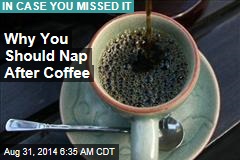| Copper shines as flexible conductor Posted: 29 Aug 2014 07:35 AM PDT By turning instead to copper, both abundant and cheap, researchers have developed a way of making flexible conductors cost-effective enough for commercial application.  |
| Astrophysicists report radioactive cobalt in supernova explosion Posted: 29 Aug 2014 07:34 AM PDT Astrophysicists have detected the formation of radioactive cobalt during a supernova explosion, lending credence to a corresponding theory of supernova explosions.  |
| Simpler process to grow germanium nanowires could improve lithium-ion batteries Posted: 29 Aug 2014 07:32 AM PDT Researchers have developed what they call "a simple, one-step method" to grow nanowires of germanium from an aqueous solution. Their process could make it more feasible to use germanium in lithium-ion batteries.  |
| Breakthrough in light sources for new quantum technology Posted: 29 Aug 2014 05:42 AM PDT One of the most promising technologies for future quantum circuits are photonic circuits, i.e. circuits based on light (photons) instead of electrons (electronic circuits). First, it is necessary to create a stream of single photons and control their direction. Researchers have now succeeded in creating a steady stream of photons emitted one at a time and in a particular direction.  |
| Plug 'n' play protein crystals Posted: 29 Aug 2014 05:39 AM PDT Almost a hundred years ago in 1929 Linus Pauling presented the famous Pauling's Rules to describe the principles governing the structure of complex ionic crystals. These rules essentially describe how the arrangement of atoms in a crystal is critically dependent on the size of the atoms, their charge and type of bonding. According to scientists today, similar rules can be applied to prepare ionic colloidal crystals consisting of oppositely charged proteins and virus particles.  |
| How nerve cells communicate with each other over long distances: Travelling by resonance Posted: 29 Aug 2014 05:38 AM PDT How nerve cells within the brain communicate with each other over long distances has puzzled scientists for decades. The way networks of neurons connect and how individual cells react to incoming pulses in principle makes communication over large distances impossible. Scientists provide now a possible answer how the brain can function nonetheless: by exploiting the powers of resonance.  |
| Precision control of the timing, structure and functions in molecular self-assembly Posted: 29 Aug 2014 05:38 AM PDT Scientists have developed a new methodology that can easily and precisely control the timing of and the structure as well as functions obtained in self-assembly of π-conjugated molecules, which is a key technology in the field of organic electronics materials.  |
| Snails tell of the rise and fall of the Tibetan Plateau Posted: 29 Aug 2014 05:38 AM PDT The rise of the Tibetan plateau -- the largest topographic anomaly above sea level on Earth -- is important for both its profound effect on climate and its reflection of continental dynamics. Scientists have now employed a cutting-edge geochemical tool -- "clumped" isotope thermometry -- using modern and fossil snail shells to investigate the uplift history of the Zhada basin in southwestern Tibet.  |
| The universal 'anger face': Each element makes you look physically stronger and more formidable Posted: 28 Aug 2014 03:48 PM PDT The next time you get really mad, take a look in the mirror. See the lowered brow, the thinned lips and the flared nostrils? That's what social scientists call the "anger face," and it appears to be part of our basic biology as humans. Now, researchers have identified the functional advantages that caused the specific appearance of the anger face to evolve.  |
| NASA's Spitzer Space Telescope witnesses asteroid smashup Posted: 28 Aug 2014 02:01 PM PDT NASA's Spitzer Space Telescope has spotted an eruption of dust around a young star, possibly the result of a smashup between large asteroids. This type of collision can eventually lead to the formation of planets.  |
| Researchers use NASA and other data to look into the heart of a solar storm Posted: 28 Aug 2014 02:00 PM PDT Scientists found that the CME contained a rare piece of dense solar filament material. This filament coupled with an unusually fast speed led to the large amount of solar material observed.  |
| Flapping baby birds give clues to origin of flight Posted: 28 Aug 2014 02:00 PM PDT The origin of flight is a contentious issue: some argue that tree-climbing dinosaurs learned to fly in order to avoid hard falls. Others favor the story that theropod dinosaurs ran along the ground and pumped their forelimbs to gain lift, eventually talking off. New evidence showing the early development of aerial righting in birds favors the tree-dweller hypothesis.  |
| Second-hand e-cig smoke compared to regular cigarette smoke Posted: 28 Aug 2014 11:28 AM PDT Second-hand e-cig smoke has 10 times less particulate matter than regular cigarette smoke; but higher levels of certain toxic metals, a new study finds.  |
| Watching the structure of glass under pressure Posted: 28 Aug 2014 11:28 AM PDT Glass has many applications that call for different properties, such as resistance to thermal shock or to chemically harsh environments. Glassmakers commonly use additives such as boron oxide to tweak these properties by changing the atomic structure of glass. Now researchers have for the first time captured atoms in borosilicate glass flipping from one structure to another as it is placed under high pressure.  |
| How the zebrafish gets its stripes: Uncovering how beautiful color patterns can develop in animals Posted: 28 Aug 2014 11:27 AM PDT The zebrafish, a small fresh water fish, owes its name to a striking pattern of blue stripes alternating with golden stripes. Three major pigment cell types, black cells, reflective silvery cells, and yellow cells emerge during growth in the skin of the tiny juvenile fish and arrange as a multi-layered mosaic to compose the characteristic color pattern. While it was known that all three cell types have to interact to form proper stripes, the embryonic origin of the pigment cells that develop the stripes of the adult fish has remained a mystery up to now. Scientists have now discovered how these cells arise and behave to form the 'zebra' pattern.  |
| Prehistoric migrations: DNA study unravels the settlement history of the New World Arctic Posted: 28 Aug 2014 11:27 AM PDT A new DNA study unravels the settlement history of the New World Arctic. We know people have lived in the New World Arctic for about 5,000 years. Archaeological evidence clearly shows that a variety of cultures survived the harsh climate in Alaska, Canada and Greenland for thousands of years. Despite this, there are several unanswered questions about these people.  |
| Home is where the microbes are Posted: 28 Aug 2014 11:27 AM PDT A person's home is their castle, and they populate it with their own subjects: millions and millions of bacteria. Scientists have detailed the microbes that live in houses and apartments. The results shed light on the complicated interaction between humans and the microbes that live on and around us. Mounting evidence suggests that these microscopic, teeming communities play a role in human health and disease treatment and transmission.  |
| New research reveals how wild rabbits were genetically transformed into tame rabbits Posted: 28 Aug 2014 11:27 AM PDT The genetic changes that transformed wild animals into domesticated forms have long been a mystery. An international team of scientists has now made a breakthrough by showing that many genes controlling the development of the brain and the nervous system were particularly important for rabbit domestication. The study gives answers to many genetic questions.  |
| Electric current to brain boosts memory: May help treat memory disorders from stroke, Alzheimer's, brain injury Posted: 28 Aug 2014 11:27 AM PDT Stimulating a region in the brain via non-invasive delivery of electrical current using magnetic pulses, called Transcranial Magnetic Stimulation, improves memory. The discovery opens a new field of possibilities for treating memory impairments caused by conditions such as stroke, early-stage Alzheimer's disease, traumatic brain injury, cardiac arrest and the memory problems that occur in healthy aging.  |
| Astronomy: Radio telescopes settle controversy over distance to Pleiades Posted: 28 Aug 2014 11:27 AM PDT A worldwide network of radio telescopes measured the distance to the famous star cluster the Pleiades to an accuracy within 1 percent. The result resolved a controversy raised by a satellite's measurement that now is shown to be wrong. The incorrect measurement had challenged standard models of star formation and evolution.  |
| Genomic sequencing reveals mutations, insights into 2014 Ebola outbreak Posted: 28 Aug 2014 11:27 AM PDT In response to an ongoing, unprecedented outbreak of Ebola virus disease in West Africa, a team of researchers has rapidly sequenced and analyzed more than 99 Ebola virus genomes. Their findings could have important implications for rapid field diagnostic tests.  |
| From bite site to brain: How rabies virus hijacks and speeds up transport in nerve cells Posted: 28 Aug 2014 11:27 AM PDT Rabies is usually transmitted through the bite of an infected animal into muscle tissue of the new host. From there, the virus travels all the way to the brain where it multiplies and causes the usually fatal disease. A new article sheds light on how the virus hijacks the transport system in nerve cells to reach the brain with maximal speed and efficiency.  |
| Mystery solved: 'Sailing stones' of Death Valley seen in action for the first time Posted: 28 Aug 2014 11:19 AM PDT Racetrack Playa is home to an enduring Death Valley mystery. Littered across the surface of this dry lake, also called a "playa," are hundreds of rocks -- some weighing as much as 320 kilograms (700 pounds) -- that seem to have been dragged across the ground, leaving synchronized trails that can stretch for hundreds of meters.  |
| Small molecule acts as on-off switch for nature's antibiotic factory: Tells Streptomyces to either veg out or get busy Posted: 28 Aug 2014 10:58 AM PDT Biochemists have identified the developmental on-off switch for Streptomyces, a group of soil microbes that produce more than two-thirds of the world's naturally derived antibiotic medicines. Their hope now would be to see whether it is possible to manipulate this switch to make nature's antibiotic factory more efficient.  |
| Marine protected areas inadequate for protecting fish and ocean ecology, study finds Posted: 28 Aug 2014 10:58 AM PDT A new study reports that an expansion of marine protected areas is needed to protect fish species that perform key ecological functions. According to investigators, previous efforts at protecting fish have focused on saving the largest numbers of species, often at the expense of those species that provide key and difficult-to-replace ecological functions.  |
| A new, tunable device for spintronics Posted: 28 Aug 2014 10:53 AM PDT An international team of scientists has developed a tunable spin-charge converter made of GaAs. Spin-charge converters are important devices in spintronics, an electronic which is not only based on the charge of electrons but also on their spin and the spin-related magnetism. Spin-charge converters enable the transformation of electric into magnetic signals and vice versa.  |
| Inter-dependent networks stress test Posted: 28 Aug 2014 08:52 AM PDT A new study relies on a complex systems modelling approach to analyze inter-dependent networks and improve their reliability in the event of failure. Energy production systems are good examples of complex systems. Their infrastructure equipment requires ancillary sub-systems structured like a network-including water for cooling, transport to supply fuel, and ICT systems for control and management.  |
| Up to 3,000 times the bacterial growth on hollow-head toothbrushes Posted: 28 Aug 2014 08:52 AM PDT Solid-head power toothbrushes retain less bacteria compared to hollow-head toothbrushes, according to new research.  |
| Neuroscientists watch imagination happening in the brain Posted: 28 Aug 2014 08:09 AM PDT By showing people their own photos during MRI sessions, neuroscientists distinguished between brain activity that is specific to memory and activity that is specific to imagination.  |
| Ancient metal workers were not slaves but highly regarded craftsmen Posted: 28 Aug 2014 08:09 AM PDT In the course of ongoing excavations at Timna Valley, archaeologists analyzed remnants of food eaten by copper smelters 3,000 years ago. This analysis indicates that the laborers operating the furnaces were in fact skilled craftsmen who enjoyed high social status and adulation. They believe their discovery may have ramifications for similar sites across the region.  |
| Synthesis produces new fungus-derived antibiotic Posted: 28 Aug 2014 08:09 AM PDT A fortuitous collaboration has led to the total synthesis of a recently discovered natural antibiotic. The laboratory recreation of a fungus-derived antibiotic, viridicatumtoxin B, may someday help bolster the fight against bacteria that evolve resistance to treatments in hospitals and clinics around the world.  |
| Indoor mold poses health risk to asthma sufferers Posted: 28 Aug 2014 08:09 AM PDT By critically reviewing the findings from 17 studies in eight different countries, the research has found that the presence of several types of mould can lead to breathing problems in asthma sufferers, as well as increasing the likelihood of developing the condition.  |
| Quantum physics enables revolutionary imaging method Posted: 28 Aug 2014 08:08 AM PDT Researchers have developed a fundamentally new quantum imaging technique with strikingly counter-intuitive features. For the first time, an image has been obtained without ever detecting the light that was used to illuminate the imaged object, while the light revealing the image never touches the imaged object.  |
| Nanoscale assembly line: Nanoscale production line for assembly of biological molecules created Posted: 28 Aug 2014 08:08 AM PDT Researchers have realized a long-held dream: inspired by an industrial assembly line, they have developed a nanoscale production line for the assembly of biological molecules.  |
| Study shows where on the planet new roads should and should not go Posted: 28 Aug 2014 08:06 AM PDT Researchers have created a 'large-scale zoning plan' that aims to limit the environmental costs of road expansion while maximizing its benefits for human development.  |
| Doing more with less: New technique uses fraction of measurements to efficiently find quantum wave functions Posted: 28 Aug 2014 08:01 AM PDT Just two years ago, with the advent of a technique called direct measurement, scientists discovered they could reliably determine a system's wave function by "weakly" measuring one of its variables (e.g. position) and "strongly" measuring a complementary variable (momentum). Researchers have now taken this method one step forward by combining direct measurement with an efficient computational technique.  |
| Endangered Siamese Crocodiles Released in Wild Posted: 28 Aug 2014 08:01 AM PDT Biologists have just released 17 juvenile critically endangered Siamese crocodiles into a protected wetland in Lao PDR. The one-to-two-year-old crocodiles, which range between 50-100 cm (20-39 inches) in length, were raised in facilities to protect the endangered reptiles and their habitat.  |
| Paleontology: Oldest representative of a weird arthropod group Posted: 28 Aug 2014 06:14 AM PDT Biologists have assigned a number of 435-million-year-old fossils to a new genus of predatory arthropods. These animals lived in shallow marine habitats and were far less eye-catching than related forms found in Jurassic strata.  |
| Readers with dyslexia have disrupted network connections in the brain, map the circuitry of dyslexia shows Posted: 28 Aug 2014 06:12 AM PDT Dyslexia, the most commonly diagnosed learning disability in the United States, is a neurological reading disability that occurs when the regions of the brain that process written language don't function normally. The use of non-invasive functional neuroimaging tools has helped characterize how brain activity is disrupted in dyslexia. However, most prior work has focused on only a small number of brain regions, leaving a gap in our understanding of how multiple brain regions communicate with one another through networks, called functional connectivity, in persons with dyslexia. Scientists have now conducted a whole-brain functional connectivity analysis of dyslexia using functional magnetic resonance imaging (fMRI).  |
| From nose to knee: Engineered cartilage regenerates joints Posted: 28 Aug 2014 06:02 AM PDT Human articular cartilage defects can be treated with nasal septum cells. Researchers now report that cells taken from the nasal septum are able to adapt to the environment of the knee joint and can thus repair articular cartilage defects. The nasal cartilage cells' ability to self-renew and adapt to the joint environment is associated with the expression of so-called HOX genes.  |
| Materials: Cubic cluster chills out Posted: 27 Aug 2014 06:37 PM PDT A gadolinium-based material that can be cooled by varying a magnetic field may be useful for cooling low-temperature sensors.  |
| Protein glue shows potential for use with biomaterials Posted: 27 Aug 2014 06:37 PM PDT Scientists have shown that a synthetic protein called AGMA1 has the potential to promote the adhesion of brain cells in a laboratory setting. It is also cheaper and easier to produce on a large scale. This could help overcome a major challenge in nerve tissue engineering.  |
| From water to land and back, the mosquitofish is on a roll Posted: 27 Aug 2014 05:35 PM PDT Some fish will leap out of water to escape a predator, but biologists have observed that the mosquitofish chooses the most energy-efficient method for returning -- a finding that has evolutionary implications.  |





















